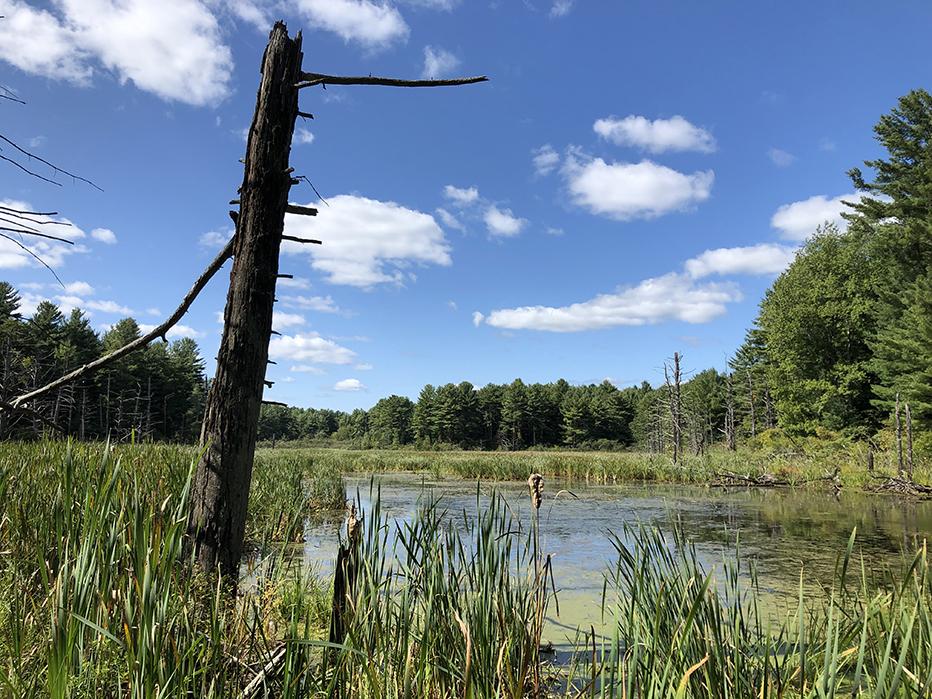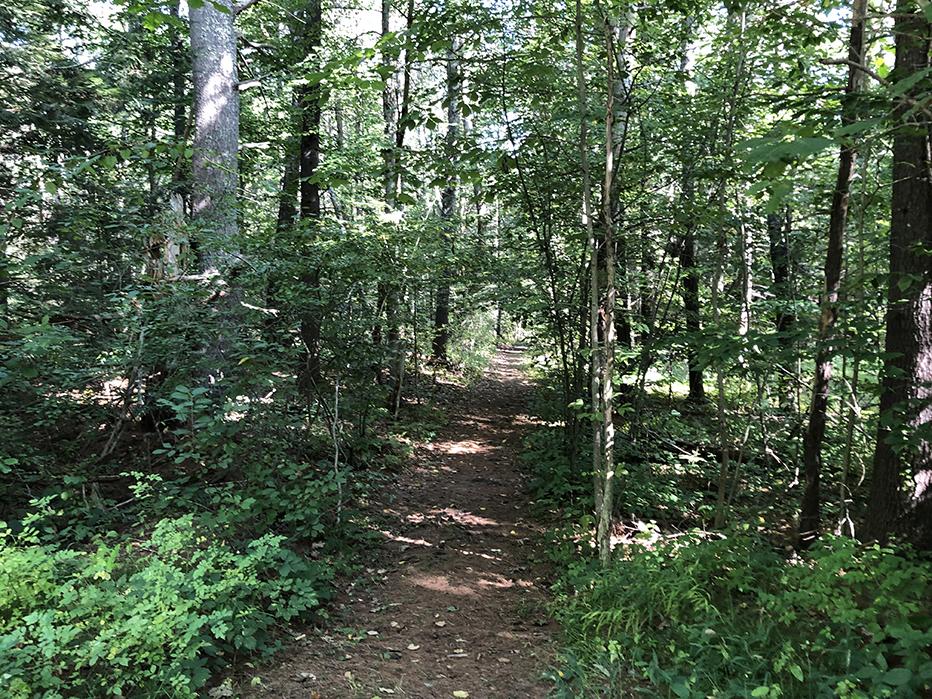- Tags:
- Land Conservation

(Photo: Brian Hotz)
HAMPTON FALLS, N.H. (May 27, 2021)—James and Katherine Kibler acted quickly when 30 acres next to their home went on the market. The property is a highly developable and desirable parcel of land, located on a cul-de-sac with homes on the south and west side of the property. Realizing that there was no time to waste, the couple took a leap of faith and purchased the property, while working with the Hampton Falls Conservation Commission and the Society for the Protection of New Hampshire Forests to permanently conserve the property. This week, the Kiblers sold a conservation easement to the Forest Society.
“Land conservation is very important to us,” said James Kibler. “This property is a wonderful asset to the local community, offering residents an established trail system used for hiking, snowshoeing, nature observation, and dog walking. Hunters and anglers also use the property. We’ve enjoyed watching otters and beavers and a variety of wildlife — it would be a shame to see it developed.”
Known now as Clay Brook Forest, the protected property lies in the Taylor River watershed, less than a quarter mile from tidal waters and less than two miles from Hampton Bay. It is bounded on the north by Clay Brook, which runs into the Taylor River just upstream from the property. The conservation area contains 1,000 feet of frontage on Clay Brook and 700 feet of frontage on the Taylor River. Clay Brook Forest is just downstream from the Town of Hampton Falls’ 73-acre Taylor River Headwaters Conservation Complex and abuts the Rockingham Conservation District’s 163-acre Hurd Farm conservation easement.
The property contains a vernal pool and evidence of fisher cats, ermine, mink, river otters, bobcats, red fox, coyotes, racoons, porcupines, deer, beaver, moose, and various waterfowl species have all been present on the property. The property also contains several stonewalls and an old mill site/dam on the Taylor River.
“We are so happy the Town had this opportunity to work with James and Kate to conserve this parcel of land,” states Shawn Hanson, board member with the Town of Hampton Falls Conservation Commission. “The property is a wonderful community resource and is a priority area for the Town of Hampton Falls in our overall conservation plan. Access to lands like this property are part of what makes Hampton Falls the special community it is.”

A conservation easement puts in place a perpetual commitment to keep the land undeveloped, protect wildlife habitat, and ensures the land is open to the public for passive recreation. The landowners can still use the land to practice agriculture and forestry. The property is within a core conservation focus area of the Great Bay Partnership’s Coast Conservation Plan, and approximately 80 percent of the property is ranked as “Conservation Priority Area,” by the Rockingham Planning Commission.
The project was funded by grants from the Town of Hampton Falls ($376,365), NH Land & Community Heritage Investment Program ($100,000), the Department of Environmental Services’ Aquatic Resource Mitigation Fund Program ($40,000), Great Bay Resource Protection Partnership ($10,000), as well as private foundations including the VF Foundation and the Fuller Foundation. Community outreach led by the volunteer Friends of Clay Brook Forest played an important role in getting the word out, and as a result about 100 individual donors contributed to the effort.
“LCHIP is always pleased to assist with a project that has a large amount of local support,” states Dijit Taylor, executive director of the Land & Community Heritage Investment Program. “The fact that it already provides a well-used network of trails that can be used in all four seasons make it extra special. The global pandemic highlighted the importance of local outdoor recreation opportunities and here is a great example of a partnership that helps to meet that need. This is an asset that will benefit the people of North Hampton and the state for years to come.”
ABOUT THE FOREST SOCIETY
The Forest Society is a private, non-profit land trust and forestry organization established in 1901. It currently holds more than 750 conservation easements statewide permanently protecting more than 135,000 acres of New Hampshire’s landscapes. The Forest Society also owns 191 forest reservations constituting more than 57,000 acres in 105 New Hampshire communities.
#####
